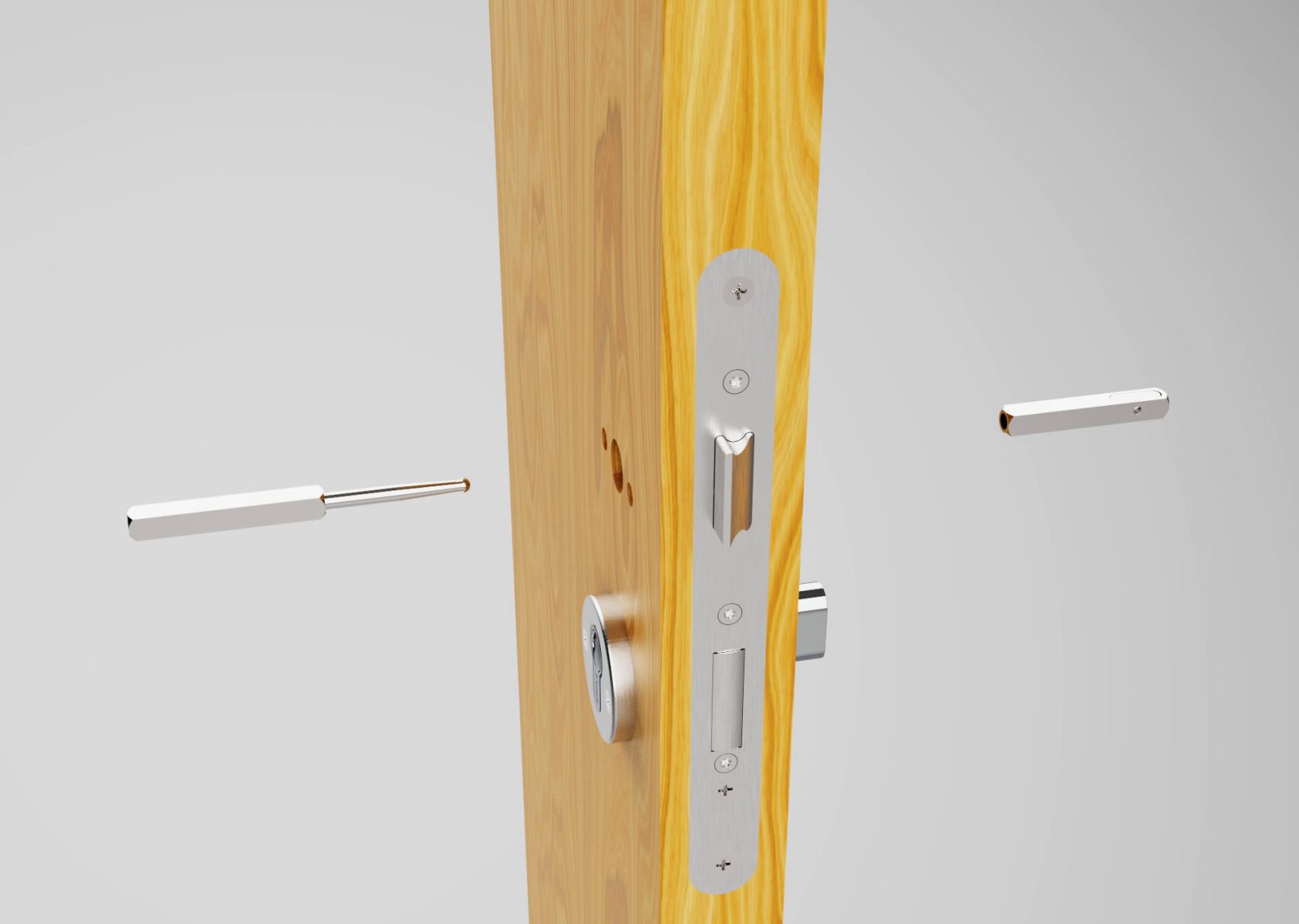Shaping the future of hardware


Glass Times speaks with Dan Savage, product engineer at Hoppe and a driving force behind innovation at Arrone, Hoppe’s architectural ironmongery brand. With over 25 years of experience in product design, Dan shares insights into his career, recent projects – including the development of a pioneering split spindle – and his vision for the future of door hardware.
Glass Times (GT): Tell us about how you got into your career.
Dan Savage (DS): I hold a degree in industrial design from Teesside University, Middlesbrough. It’s a well-regarded course with many students going on to product design roles.
I’ve always been passionate about blending art and engineering and was interested in drawing and sketching from a young age, as well as understanding how things worked. I studied art and design at both GCSE and A level.
My dad was an engineer and owned a sheet metal business, so I got to know about processes and machinery at an early age.
GT: What is your role at Hoppe?
DS: I look after product design and innovation. I design solutions to problems, which involves a mix of creating new products and making innovations to existing products, split about 50/50.
I have big projects each year that we are looking at for marketplace entry, and design and deliver those. This incorporates innovation not only in design but also user experience, packaging and factory assembly.
Arrone is a strong, technically complex brand, and my work helps keep us ahead of competitors.
I also control mechanical auditing, ensuring CE and Certifire certification evidence is up to date and manage production processes, control the tooling register, and produce sample inspection reports (SIRs). I also create CAD drawings and work with sales to provide the latest dimensioned drawings for customers.
GT: What have been your big projects over the last 12 months?
DS: My main focus has been the new Arrone AR227 split spindle for AR915 apartment locks, plus PAS 24 panic hardware. The split spindle addresses overtightening issues during installation.
Split spindles have two halves allowing independent movement on each side, ensuring secure locking from the outside while allowing quick egress from the inside. My design eliminates overtightening risk with a clip-fix mechanism, making fitting faster and easier.
GT: Tell us more about designing the split spindle.
DS: Apartment blocks and hotels need split spindles for security and safe egress. However, customers can overtighten the screws, making the emergency side harder to use.
Although the products contain full instructions it became clear we needed a better product to overcome this issue.
I designed a locking split spindle in two halves where part A installed through the lock follower, and part B clips onto it with a sprung clip. It can’t be overtightened, is five times faster to install, and uses fewer components.
This was the product of a eureka moment. I had the idea quite early on when I was looking at a luggage case with castor wheels. Some of them have wheels that can clip and unclip for storage and that give a reassuring ‘click’ sound when attached. I thought this could be used with doors, so it then became about developing and perfecting it.
The product has been tested and is available to purchase.
GT: How would you summarise the favourite parts of your role?
DS: I love making the user experience better and breathing new life into existing designs.
Crucially, I design for the problem or to a cost, not just for the sector. Design should support product maintenance, extending lifespan, and it’s rewarding to solve real user problems and keep customers happy.
GT: What’s your process for designing brand new products?
DS: We shortlist products each year based on customer requests and our own priorities. For 2023/24, the split spindle and PAS 24 panic hardware were our priorities.
I lead the research and development phase exploring market trends and brainstorming improvements, then prototype and test feasibility before ensuring manufacturability.
I work with door manufacturers as they know what they want – to speed up the process, make things easier, and promote more ease in installation. This is because lots of products are placed on the door at source, so we must work together to meet their needs.
This is especially true of fire doors where everything needs to be tested together.
When it comes to architectural ironmongery, my focus is on creating new things in the market that they’ll want to sell. Innovation is a big focus.
GT: Is the process different when you’re innovating from existing products?
DS: We innovate from existing products if a feature or look and feel needs refreshing.
Value engineering is key – reducing weight, removing parts, simplifying assembly – all while keeping the same function and quality. It’s vital that CE-marked products retain their high standards.
Sometimes we also partner with other manufacturers to carry out fire testing in a group to create an economy of scale.
GT: Looking back, what have been some of the biggest changes in the sector in five years?
DS: The speed of being able to design and bring a product to life has been key.
At Hoppe/Arrone, we use 3D printing to speed up feasibility, allowing for quick CAD design, one-day printing and immediate testing. This approach cuts time, costs, and improves product fit and function.
GT: Looking ahead, what major changes do you see for the next five years?
DS: Affordable 3D printing in metal will further speed up testing. The Grenfell Tower Inquiry Phase 2 Report and the Construction Products Reform Green Paper 2025 also means there is – quite rightly – an increased focus on product testing and fire safety.
GT: What are the opportunities for the business on the horizon?
DS: We’re excited about expanding our range with more products. Software innovation will be key to this, as photorealistic renderings and animations make it easier to communicate designs to the board, bringing them to life from early stages. The future looks exciting in the world of door hardware and architectural ironmongery!